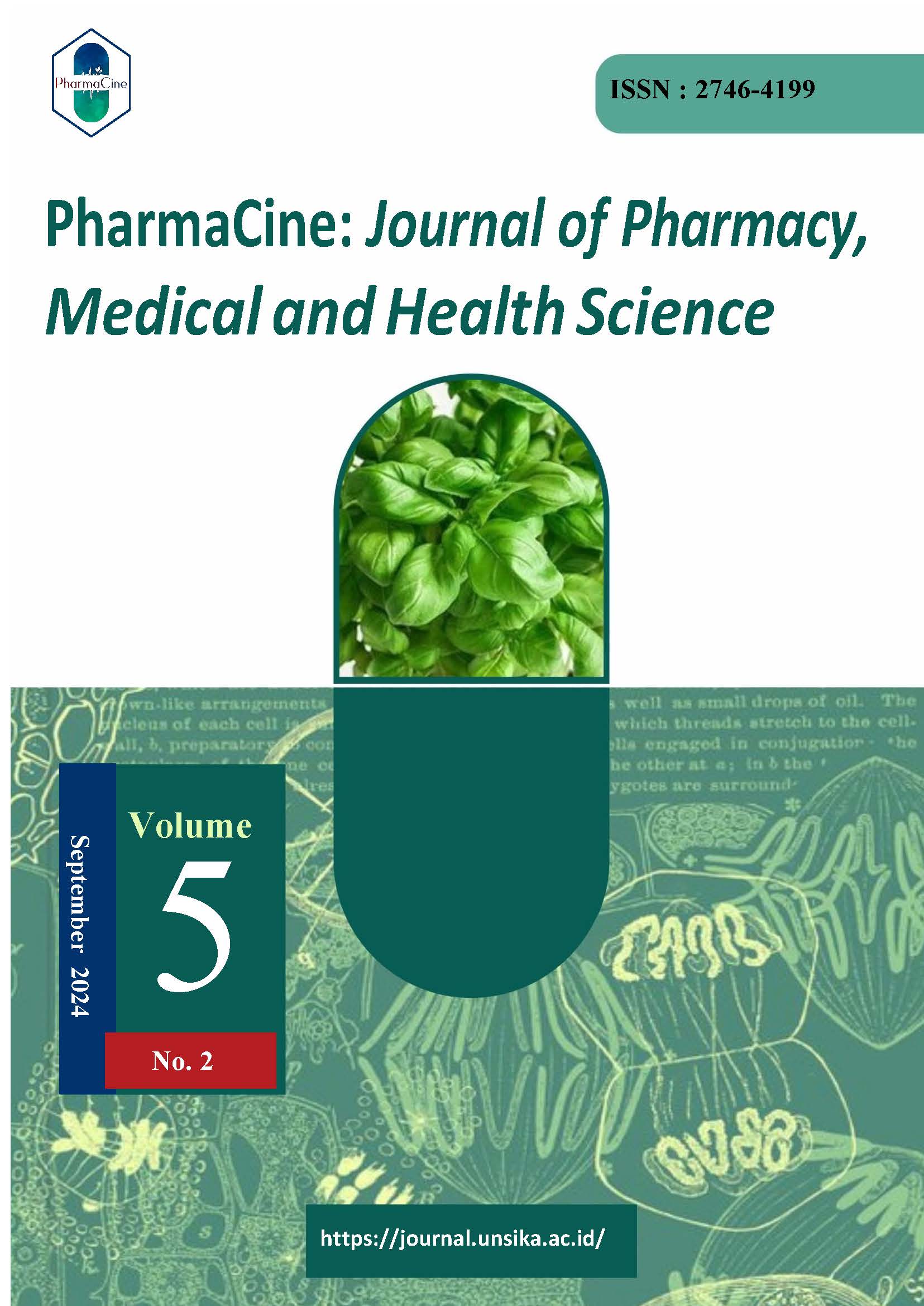Papaya Leaf Extract Utilization Formulation (Carica papaya L.) as a Pesticide Vegetable Formulasi Pemanfaatan Ekstrak Daun Pepaya (Carica papaya L.) Sebagai Pestisida Nabati
Main Article Content
Abstract
Background: Many people do not understand how to use synthetic pesticides so that they can be harmful to humans. The use of pesticides made from nature can be a solution for the community, not only materials that are easily available but also ingredients that are safer because they use natural ingredients. Papaya leaves (Carica papaya L.) contain saponin and flavonoid compounds where these compounds can cause the death of pests. Aim: This study aims to formulate it in pesticide preparations and then evaluate it so that it can be seen that the concentration of pesticide preparations is good Method: This type of research is experimental in the laboratory by making 3 formulas consisting of F1 with a concentration of 8% papaya leaf extract, F2 12% and F3 16%. The tests include organoleptic, homogeneity and pH. Result: The results showed that the organoleptic tests carried out on all formulations did not have much difference, starting from the smell and shape they both had a liquid form, a distinctive smell of papaya leaves, only the concentrations from small to large experienced a brown to greenish-brown color. The homogeneity test results from the three formulations were not homogeneous and the pH test results were the more extracts, the higher the pH value. Conclusion:. Papaya leaf extract with concentrations of 8%, 12%, and 16% can be formulated in the form of pesticide preparations.
Keywords: Excessive Synthetic Pesticides, Papaya Leaves (Carica papaya L.), Pesticides, Pests
Downloads
Article Details

This work is licensed under a Creative Commons Attribution-ShareAlike 4.0 International License.
Authors who publish in PharmaCine: Journal of Pharmacy, Medical and Health Science agree to the following terms:
- Authors retain copyright and grant the journal right of first publication with the work simultaneously licensed under a Creative Commons Attribution-ShareAlike 4.0 International License that allows others to share the work with an acknowledgment of the work's authorship and initial publication in this journal.
- Authors can enter into separate, additional contractual arrangements for the non-exclusive distribution of the journal's published version of the work (e.g., post it to an institutional repository or publish it in a book), with an acknowledgment of its initial publication in this journal.
- Authors are permitted and encouraged to post their work online (e.g., in institutional repositories or on their website) prior to and during the submission process, as it can lead to productive exchanges, as well as earlier and greater citation of published work (See The Effect of Open Access).
PharmaCine : Journal of Pharmacy, Medical and Health Science by https://journal.unsika.ac.id/ is licensed under a Creative Commons Attribution-ShareAlike 4.0 International License.
You are free to:
- Share, copy and redistribute the material in any medium or format
- Adapt, remix, transform, and build upon the material for any purpose, even commercially.
- The licensor cannot revoke these freedoms as long as you follow the license terms.
References
Vandalisna V, Mulyono S, Putra B. Penerapan Teknologi Pestisida Nabati Daun Pepaya Untuk Pengendalian Hama Terung. J Agrisistem. 2021;17(1):56–64.
Listianti NN, Winarno W, Erdiansyah I. Pemanfaatan Ektrak Daun Pepaya (Carica papaya L.) Sebagai Insektisida Nabati Pengendali Walang Sangit (Leptocorisa acuta) Pada Tanaman Padi. Agriprima J Appl Agric Sci. 2019;3(1):81–5.
Adiartayasa W, Sritamin M, Puspawati M. Jurnal Pengenalan Insecta Pada Tanaman Angrek. Bul Udayana Mengabdi. 2017;16(1):51–7.
Matnawi H. Perlindungan Tanaman. 2008;
Amalia T. FORMULASI DAN EVALUASI SEDIAAN LOTION EKSTRAK KETUMBAR (Coriandrum sativum L.) SEBAGAI ANTI NYAMUK Aedes albopictus. Parapemikir J Ilm Farm. 2021;11(1):66.
Padmasari PD, Astuti KW, Warditiani NK. Skrining fitokimia ekstrak etanol 70% rimpang bangle (z. J Farm Udayana [Internet]. 2013;2(4):1–7. Available from: https://ojs.unud.ac.id/index.php/jfu/article/view/7395/5645
Ikalinus R, Widyastuti S, Eka Setiasih N. Skrining Fitokimia Ekstrak Etanol Kulit Batang Kelor (Moringa oleifera). Indones Med Veterinus. 2015;4(1):77.
Andriani R, Budi A A, Dewi H C, Handayani D. Ekstraksi Batang Sereh, Daun Sirih Dan Daun Tembakau Untuk Produksi Pestisida Organik. J Inov Tek Kim. 2019;4(1):36–9.
Elinaningtyas R, Wibowo AA. Pengaruh Jenis Pelarut Dan Jumlah Pelarut Pada Ekstraksi Maserasi Limbah Kulit Bawang Merah Terhadap Biopestisida Yang Dihasilkan. DISTILAT J Teknol Separasi. 2024;10(1):296–302.

